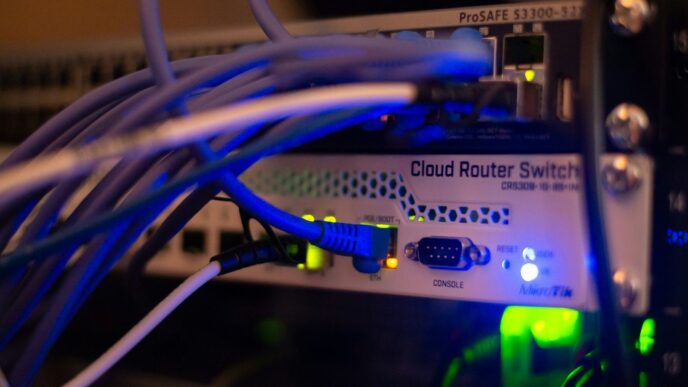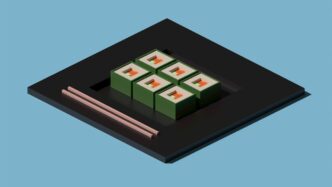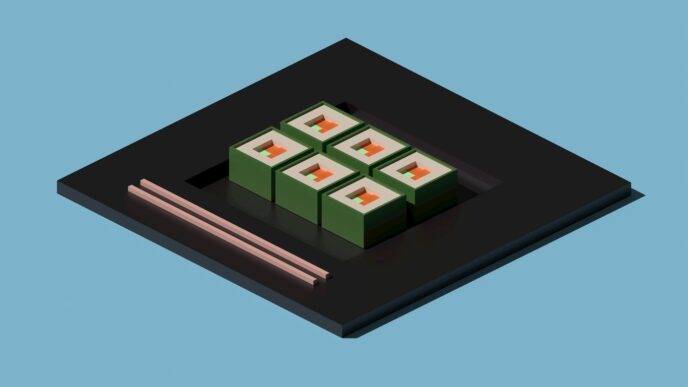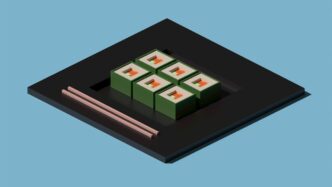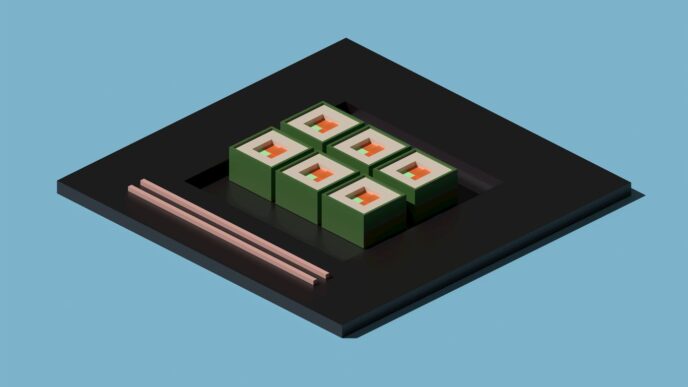Advancing Enterprise Solutions with Anyon Systems
Anyon Systems is really making waves by connecting their quantum tech with NVIDIA’s CUDA-Q framework. This isn’t just some small upgrade; it’s about making quantum computing actually useful for businesses right now. They’re bridging the gap between what we have today and what quantum computers can do tomorrow.
Integration with NVIDIA CUDA-Q Framework
Think of it like this: NVIDIA has the super-fast highways (their GPUs), and Anyon is building the specialized vehicles (their quantum processors) that can use those highways for specific, tough jobs. By linking up with CUDA-Q, Anyon’s systems can talk to NVIDIA’s hardware much more easily. This means companies can start using quantum algorithms without needing a whole new, complicated setup. It simplifies things a lot, letting developers focus on solving problems instead of wrestling with different systems.
Unlocking New Performance Levels
So, what does this integration actually do? It means businesses can tackle problems that were just too hard before. We’re talking about things like:
- Financial Modeling: Finding better ways to manage risk or optimize investment portfolios.
- Artificial Intelligence: Training AI models faster or creating more sophisticated ones.
- Materials Science: Discovering new materials with specific properties.
This hybrid approach means you get the speed of classical computers for most tasks, but you can hand off the really tricky parts to the quantum processor when needed. It’s a smart way to get more power without waiting for full-scale quantum computers.
Applications in Finance and Artificial Intelligence
These two areas are getting a lot of attention, and for good reason. In finance, the ability to crunch massive datasets and explore complex scenarios quickly could change how markets work. For AI, it could mean faster training times for machine learning models or even entirely new types of AI that can learn and adapt in ways we haven’t seen yet. Anyon’s work here is about making these advanced capabilities accessible to companies that can use them to get ahead.
Pioneering Hybrid Quantum-Classical Computing
Synergy of Quantum Processors and Classical Power
So, what’s the big deal with hybrid quantum-classical computing? It’s basically about getting the best of both worlds. We’ve got these amazing quantum processors that can tackle certain problems way faster than any regular computer. But, they’re not perfect for everything. That’s where classical computers, especially those super-powered ones with NVIDIA’s tech, come in. They handle the heavy lifting for tasks that don’t need quantum weirdness, and then they hand off the really tricky bits to the quantum processor. This partnership lets us solve problems that were just out of reach before. It’s like having a super-specialized tool for the job, but also a whole toolbox for everything else.
Accelerating Algorithm Development and Deployment
Developing quantum algorithms can be a real headache. You need to figure out how to write code that works on these new machines, test it, and then actually get it running. Anyon’s systems, when hooked up with something like NVIDIA’s CUDA-Q, make this whole process a lot smoother. It gives developers a place to build, test, and deploy their quantum applications without jumping through a million hoops. Think of it as a more streamlined way to go from an idea to a working quantum solution. This means we can get new quantum algorithms out there and put to use much faster than we could previously.
Here’s a quick look at how it speeds things up:
- Development: Write and refine quantum algorithms in a familiar environment.
- Testing: Benchmark performance against classical simulations and hardware.
- Deployment: Integrate quantum capabilities into existing classical workflows.
Bridging Computing Resource Gaps
There’s still a gap between what today’s classical computers can do and what we need for some really complex problems. Quantum computers are great for certain types of calculations, but they’re not a magic bullet for everything. Hybrid systems help bridge this gap. They allow us to use quantum resources more efficiently by only employing them when they offer a real advantage. This means we don’t have to wait for massive, fully fault-tolerant quantum computers to start seeing benefits. We can start tackling high-value problems now, using a mix of what we have today and the emerging power of quantum. It’s a practical way to move forward.
Global Rollout of Anyon’s Quantum Technology
Commercial Deployment in Singapore and Korea
Anyon Systems is starting to put its quantum tech into the hands of businesses in Singapore and Korea. These places are really into new technology, and companies there are looking for ways to get ahead with computing. Anyon’s systems are designed to work with regular computers, which is a big deal for industries like finance and chemical engineering. They’re not just selling hardware; they’re offering a way for businesses to actually use this new tech to solve problems and gain an edge.
Partnership with SDT Inc. for Scalability
To make sure they can build enough of these systems for everyone who wants them, Anyon is teaming up with SDT Inc. in Korea. SDT knows how to manufacture advanced tech, and this partnership is all about making Anyon’s quantum computers available on a larger scale. Think of it like this: Anyon has the blueprints for a super-fast car, and SDT knows how to build thousands of them on an assembly line. This collaboration means more companies will be able to get their hands on this powerful computing.
Quantum-Ready Data Centers
So, where do these quantum computers live? They’re being set up in special data centers that are prepared for quantum technology. These aren’t your average server rooms. They’re built to handle the unique needs of quantum systems, providing the right environment for them to operate. This infrastructure is key to making hybrid quantum-classical computing accessible and practical for businesses looking to tap into its potential. It’s about creating the physical space where this new era of computation can truly take off.
Foundations of Anyon’s Quantum Innovation
Advanced Superconducting Quantum Processors
Anyon Systems is building its quantum computers using advanced superconducting circuits. Think of these as tiny, intricate pathways etched onto a chip where electrical currents can flow with zero resistance. These processors are the heart of their machines, designed for maximum performance. They’ve put a lot of work into making these processors scalable, meaning they can add more qubits – the basic units of quantum information – as needed. This is a big deal because more qubits generally mean more powerful computations.
Novel On-Chip Control Mechanisms
Controlling qubits is tricky business. Anyon Systems has developed some clever ways to manage these delicate quantum states right on the chip itself. They use special microwave pulses, kind of like precisely timed radio waves, to manipulate the qubits. This on-chip control is important because it reduces errors and allows for faster operations. It’s like having a super-precise remote control for each individual qubit, all integrated directly into the hardware.
Microwave Quantum Networking Architecture
To get different quantum processors to talk to each other, or even to connect to classical computers, you need a good network. Anyon Systems is creating a special architecture for this using microwaves. This isn’t your typical Wi-Fi; it’s a system designed to transmit quantum information reliably between different parts of the quantum computer or even between separate machines. This networking capability is key to building larger, more complex quantum systems in the future.
The Role of Anyons in Topological Quantum Computing
So, what’s the deal with anyons and topological quantum computing? It sounds pretty out there, right? Well, it turns out these little things, anyons, are actually pretty important for making quantum computers more reliable. Think of them as special particles that live in flat, 2D worlds. Unlike the regular particles we’re used to, like electrons or photons, anyons have this weird behavior when you move them around each other. It’s called ‘braiding,’ and the way you braid them actually changes the system’s state. This is the core idea: we can use these braiding patterns to store and process information.
Unique Braiding Statistics of Anyons
These anyons aren’t like your typical fermions or bosons. Their "statistics," which basically describes how they behave when swapped, are way more complex. When you swap two identical fermions, nothing really changes in terms of the overall state. Same for bosons. But with anyons, swapping them can actually flip the state of the whole system. It depends on the specific type of anyon and how you move them. This unique braiding behavior is what makes them so interesting for quantum computing because it’s inherently tied to their position and path, not just their individual properties. It’s like drawing a knot – the knot itself is defined by how the string is tangled, not just the string material.
Information Encoding Through Topological Properties
Because the information is stored in the braiding patterns, it’s protected by the topology of the system. Topology is that branch of math that studies shapes that don’t change when you stretch or bend them. In this case, the information encoded in the anyon braids is safe from small, local disturbances. If a little bit of heat or a stray magnetic field messes with one part of the system, the overall braiding pattern, and thus the information, stays intact. It’s like trying to untie a knot by just nudging the string a little bit – it doesn’t usually work. This is a huge deal for building fault-tolerant quantum computers, which are notoriously difficult to make because quantum states are so fragile.
Robustness Against Environmental Disturbances
This topological protection is the main selling point. Traditional quantum computers use qubits that are really sensitive to noise. Any tiny bit of interference can cause errors, leading to incorrect calculations. Topological quantum computers, by using anyons and their braiding, aim to sidestep this problem. The information isn’t stored in a fragile quantum state that can be easily disrupted; it’s encoded in the very structure of how the anyons are arranged and moved. This makes the computation much more resilient. It’s still a really complex area of research, and actually creating and controlling these anyons is a massive engineering challenge, but the potential payoff in terms of reliable quantum computation is enormous.
Technological Infrastructure for Topological Quantum Computing
Advanced Materials for Quantum Processors
Building a topological quantum computer means we need some pretty special stuff to make it work. At the core are the quantum processors, and these aren’t your average silicon chips. They need to be built from materials that can keep quantum states stable, which is a big deal because quantum stuff is easily messed up by outside noise. Think super-cold environments, like near absolute zero, to keep things calm. Superconducting materials are a popular choice because they let electricity flow with almost no resistance, which is good for keeping qubits steady. But researchers are also looking at things like topological insulators and quantum Hall systems. These materials have properties that naturally help anyons, those weird quasi-particles we need, to form and behave. It’s all about finding materials that can handle the delicate dance of quantum mechanics.
Manipulation and Measurement of Quantum States
So, we’ve got the materials, but how do we actually do anything with them? That’s where manipulating and measuring quantum states comes in. For topological quantum computing, this is extra tricky because we’re dealing with anyons. These aren’t like regular particles; they’re more like disturbances in a 2D material. To make them do our bidding, we use things like carefully controlled magnetic fields or laser beams. It’s like trying to herd tiny, invisible cats. We need to guide them, make them ‘braid’ around each other in specific ways to store information, and then figure out what they did. This braiding is the key to how topological computers store data, and it’s inherently more robust than other methods. Measuring the outcome of these braids without disturbing them is a whole other challenge, requiring sensitive detectors and clever techniques.
Sophisticated Control Techniques for Quasiparticles
Getting those anyons to braid correctly is the name of the game. It requires some seriously advanced control techniques. We’re talking about using precise pulses of microwaves or electrical signals to nudge these quasiparticles into the right positions and guide their paths. It’s a bit like choreographing a very complex dance for particles that don’t really want to be told what to do. The goal is to make them follow specific paths, intertwining in a way that encodes computational steps. This braiding process is what gives topological quantum computing its potential for built-in error resistance. Because the information is stored in the way the anyons are braided, rather than in their individual states, it’s much harder for random noise to corrupt the data. However, getting this control just right, especially as we try to scale up to more anyons, is a major engineering feat. It’s a constant push to refine these techniques to make them more precise and reliable.
Wrapping Up
So, what does all this mean? Basically, Anyon Systems is making some big moves in the quantum computing world. By teaming up with NVIDIA and their CUDA-Q platform, they’re making it easier for businesses to actually use this new tech. Think about fields like finance or AI – they could see some serious changes. It’s not just about the fancy science; it’s about making quantum computing practical for companies, starting now. With early deployments happening in places like Singapore and Korea, it looks like Anyon is serious about bringing these powerful tools out of the lab and into the real world, helping businesses get ahead.




